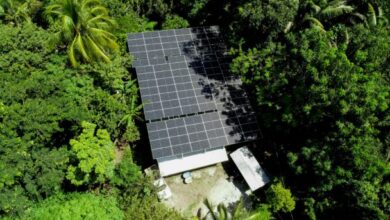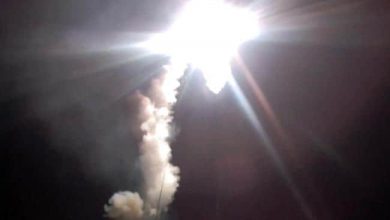Mexico Makes Risky Bet on Liquefied Gas in New Global Scenario — Global Issues


MEXICO CITY, June 30 (IPS) – Liquefied petroleum gas does not occupy a prominent place in Mexico’s energy mix, but the government wants to change that scenario, to take advantage of the crisis caused by Russia’s invasion of Ukraine and the need for new sources of fuel due to sanctions against Russia.
The war has altered the global outlook for gas by underscoring Europe’s reliance on natural gas and forcing Europe to look for other suppliers due to sanctions against Russia. If before the war started on February 24, there was oversupply and lack of interest in financing gas projects, now the equation has completely changed.
In addition to promoting the installation of private plants, Mexican President Andrés Manuel López Obrador announced on June 11 the construction of a three-billion-dollar natural gas liquefaction plant in the southern state. Oaxaca, state-owned. Federal Commission on Electricity (CFE).
A new gas pipeline to be located between Oaxaca and Coatzacoalcos, in the southeastern state of Tabasco, will help supply a liquefied natural gas (LNG) processing plant using gas from the United States. .
In July 2021, the Mexican government established a state-owned company Bienestar gasto sell fuel at subsidized prices and thus cushion the impact of international fuel price increases, fueled by a surge in demand after the peak of the COVID-19 pandemic, which has doubled since invade Ukraine.
Mexico depends on US gas for civil and industrial needs, mainly transported by pipelines by US companies, now looking to sell it in third-party markets, re-export it from Mexico after liquefaction in processing plants built here.
But this model has been criticized for chaining Mexico to gas in the long term and reinforcing dependence on fossil fuels, thereby breaking the promise of converting energy to decarbonizing domestic consumption.
“This dependence is not sustainable,” says Jaqueline Valenzuela, NGO director Center for Renewable Energy and Environmental Quality, told IPS from the northwestern city of La Paz. “What we’re seeing is we’re getting gas from fracking after the government promised to stop supporting that technology. It’s incoherent.”
In La Paz, the capital of Baja California Sur state, much of the electricity generation depends on fuel oil, a petroleum derivative that is heavily polluting and also harmful to human health.
Since energy reform in 2013, opening the sector to foreign private and local capital, Mexico has become a recipient of gas from the United States, obtained through fracking, a engineering requires large amounts of chemicals and contaminating water, and transportation through pipelines.
A gas pipeline network has been created in this country of 131 million people, with 27 public and private pipelines, for distribution over a territory of nearly two million square kilometers.
The gas recipients are about 50 combined cycle thermoelectric plants – which burn gas to generate steam for electricity – and turbogas units, both public and private.
Increasingly, however, LNG processed in Mexico will also be made available to markets on other continents, which are currently eager for suppliers that do not face Western sanctions.
opportunism
Among the beneficiaries of the new world gas scenario are Mexican facilities that receive fuel, liquefy and re-export it by ship, to take advantage of rising raw material prices.
Four private plants supply LNG in the northeast and northwest of the country, mainly for thermal power plants and industrial consumption.
Since 2008, privately Energía Costa Azul (ECA)located in the municipality of Ensenada, Baja California, has operated at a capacity of one billion cubic feet (bcf) of gas per day, owned by Infraestructura Energética Nova (IEnova), a Mexican subsidiary of the American company Sempra Energy, has been invested about $1.2 billion in this facility.
In the port of Pichilingue, also in Baja California Sur, terminal namewith a processing capacity of three million tons of LNG per year and owned by the US company New Fortress, has been in operation since July 2021. The treatment plant supplies derivatives to a local thermal power plant.
In Manzanillo, in the western state of Colima, KMS . stationowned by Korean and Japanese corporations, operating since 2012 with a capacity of 3.8 million tons per year.
On the other side of the country, in Altamira, in the northeastern state of Tamaulipas, terminal nameCo-owned by Dutch company Vopak and Enagás from Spain, operating since 2006 with a capacity of 5.7 million tons per year.
Mexico as a producer
Mexico is the 12th largest oil producer in the world and the 17th largest gas producer. In terms of proven crude oil reserves, it ranks 20th and 41st for natural gas, but industry Its hydrocarbons are in decline due to the scarcity of easily mined deposits.
In Mexico, Latin America’s second-largest economy, from 2019 to May of this year, natural gas production fluctuated between 4.6 and 4.8 bcf per day, according to official data.
Mining below domestic demand and to balance the deficit Mexico imports gas, especially from the United States, thereby importing a maximum of 935 million and a minimum of 640 million cubic feet per day (MMcf/d) in the past three years, according to data from the state-owned oil and gas corporation Petróleos Mexicanos (Pemex).
In addition, LNG processing activity has decreased. In 2019, the country refined 100,000 barrels per day (bpd) equivalent, dropping to 84,000 barrels per day in 2021. And in April 2022, the total dropped to 43,000 bpd.
LNG imports vary widely: Mexico imported nearly 54 billion bpd in 2019, totaling a drop of a billion in 2020 and rising to 67 billion bpd in 2021, falling again to 27 billion bpd April last year. In addition, the company has not exported LNG since July 2020 due to the demand of the domestic market.
Meanwhile, US pipeline exports to Mexico have quadrupled in recent years, according to data from the US government’s Energy Information Administration.
“While the United States must help its allies, America’s gas capacity provides reliable and affordable to the world is quite limited. Citizentold IPS from Washington.
“Our concern is that U.S. exports to Mexico are simply feeding Mexico’s exports of liquefied gas,” Slocum said.
Addiction
Greed for gas attracts both private and public companies. The U.S. Department of Energy (DOE) has issued at least five LNG export and re-export permits through Mexico since 2016. In addition, one project is under construction and three more are planned on the coast. Mexican Pacific.
IEnova and France’s TotalEnergies are under construction phase one of ECAa plant with a capacity of 3.25 million tons of LNG/year with an investment of two billion dollars, is expected to start operation in 2024. Meanwhile, phase two is being designed, for production an additional 12 million tons per year.
Mexico Pacific Limited LLC (MPL), owned by three US private equity funds, is building a rehabilitation plant in Puerto Libertad in the northwestern state of Sonora, with an investment of $2.5 billion, is expected to export 14 million tons of LNG annually to Asia.
President López Obrador said the first phase will begin in 2025, with 4.7 million tons.
In December 2018, the DOE allowed MPL to export up to 1.7 bcf per day from a futures facility, which requires confirmation to export fuel from the United States.
In addition, the Vista Pacifico LNG project planned by Sempra in Topolobampo, in northwestern Sinaloa state, is intended to transport fuel from the Permian Basin oil and gas production area in West Texas for re-export to Asia and Europe, during in addition to some destinations in South America.
In April 2021, Vista Pacifico was authorized by the DOE to export 40 bcf per year – 110 mcf per day – to Mexico. Of that total, 200 bcf of gas per year – 550 mcf per day – will be used for liquefaction and re-export.
Last January, Mexico’s state-owned CFE and US-based Sempra signed a voluntary memorandum of understanding about being able to build a factory for this purpose.
Also in Sinaloa, Singapore’s Private LNG Alliance is building Amigo LNG Plantwill start operating in 2027 with a processing capacity of 3.9 million tons per year.
Edmundo del Pozo, the NGO’s Regional Coordinator for Territories, Rights and Development, lamented: “The country continues to bet on the fossil fuel-exception model. We don’t see a solution. What other energy alternatives are built in the context of the climate emergency?” Fundar . Research and Analysis Center.
The expert told IPS that the modernization of hydroelectric plants and the consolidation of Pemex promoted by López Obrador since he took office in December 2018 has boosted gas consumption.
“Continuing to use fossil fuels is not an option,” said Valenzuela, head of the NGO Center for Renewable Energy and Environmental Quality.
© Inter Press Service (2022) – All rights reservedOrigin: Inter Press Service




